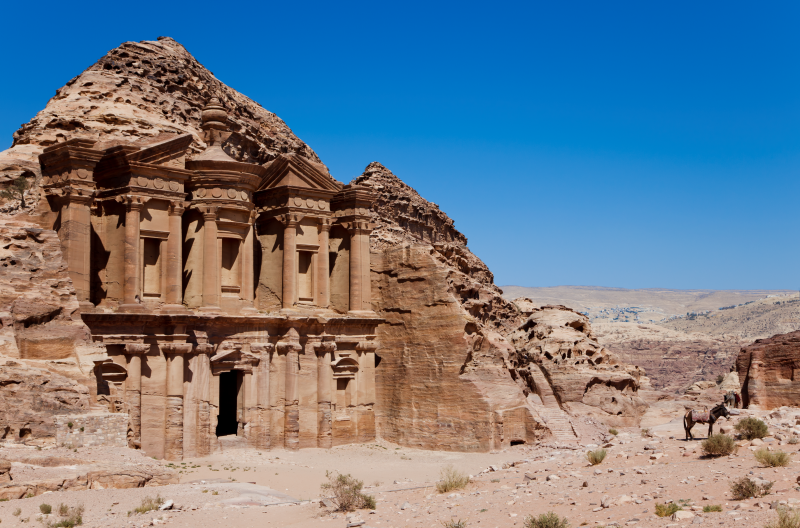Petra - The Jewel in Jordan's Crown
Petra is an entrancing place that rewards adventurous spirits – and is well worth returning to for deeper inspection. See it at its radiant best in the early morning and late evening, explore its lesser-known byways and discover some of its hidden treasures. A rich history Petra was founded 2,000 years ago by the Nabateans, a tribe originally from Arabia. They traded with, and were eventually taken over by, the Romans.
Their capital, Petra, is a unique mix of classical Roman style architecture and local styles, featuring hundreds of ornate facades carved out of the sandstone cliffs. Petra comes as an assault on the senses – the feeling of exposure to the elements is thrilling. The natural drama of the location, the colouring of the sandstone, the stillness, heat and clarity of light, all make it an unforgettable adventure. Two other factors make Petra feel incredibly special. The first is the isolation of its location, hidden as it is from the outside world between two great parallel rocky ranges. Even today, there are very few ways to get there. The second is the sensuous and remarkable colouring of Petra’s sandstone facades. Gently eroded over time by the wind and rain, amazing bands of colour streak through the rock, from scarlet to yellow to purple to brown. At sunset, the sandstone are suffused with a warm, pinkish glow.




Don’t Miss
The Siq: the main entrance to the ancient city. This narrow, wind-eroded canyon, often 150m high but a few metres wide, is visually arresting.
The Treasury: An iconic facade. Most likely a royal tomb, dating to the 1st century BC, it was carved by hand from the cliff face and is adorned with figures of eagles and deities.
The Theatre: A giant classical theatre seating 8,500 people. Built in the 1st century AD and originally Greek, it was renovated by the Romans after they took control in 106 AD.
Urn Tomb: Soaring facade towering above the centre of ancient Petra. Originally another royal tomb, it was converted into Petra’s cathedral during Byzantine rule.
The Monastery: Petra’s largest monument, also a royal tomb located up a stepped trail above the ancient city. Offers stunning mountain-top views over the desert.
High Place of Sacrifice: One of the best mountain routes in Petra, leading to an exposed, rock-carved altar 170m above the valley floor. A long descent past colourfully eroded sandstone cliffs makes a great round-trip.
Petra Church: Divert off the main path to reach this Byzantine church with mosaics of animals, birds, fish and personifications of the seasons. It’s rarely busy, but has stunning photogenic views.
Sextius Florentinus Tomb: This modest tomb, the last resting place of a Roman governor, has a graceful design that gives a human scale to Petra’s often daunting public architecture.
Turkmaniyyeh Tomb: Follow the Wadi Turkmaniyyeh road, a great walking route in or out of Petra, past this grand, unvisited tomb, with Petra’s longest inscription above the door.
Little Petra: Concealed in a mini Siq roughly 8km north, this was originally an outlying trading post. Here, more than anywhere in Petra, you can imagine your way into the distant past as you wander the sandy canyon floor past storerooms, houses, dining halls and temples.
Jabal Haroun: Petra’s highest peak, at 1,350m. The mountain is believed to be the last resting place of Moses’ brother, Aaron (Haroun in Arabic). It’s a challenging walk – a full day there and back – with a climb of 500m, but the views at the top are reward enough for all your efforts.
Petra by night: Don’t miss the chance to see Petra after dark on this guided two-hour night walk. It takes you
through the candlelit Siq to the Treasury, where you’ll enjoy tea and a Bedouin piper. Loiter at the back of the group for extra peace and quiet.
















